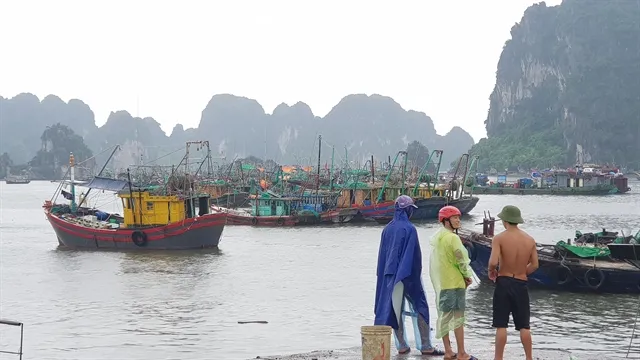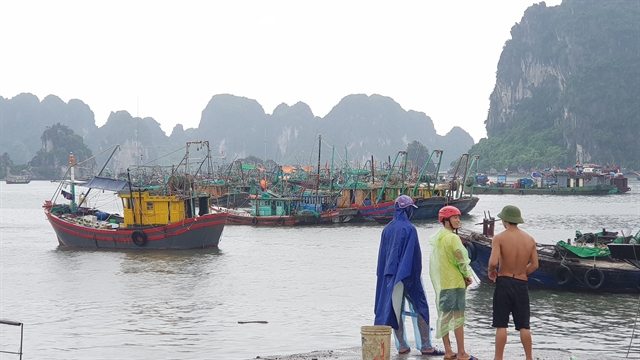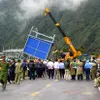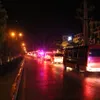Typhoon WIPHA brings heavy rain, landslides, flash floods to the north
by ,http://vietnamnews.vn/society/523470/typhoon-wipha-brings-heavy-rain-landslides-flash-floods-to-the-01 August 2019 Last updated at 15:21 PM


HÀ NỘI — Torrential rain, with a maximum rainfall of 400mm, together with landslides and flash floods are predicted to batter the northern region from midnight on Thursday due to the effects of typhoon WIPHA.
The National Centre for Hydro-meteorological Forecasting on Thursday warned that the rain, with rainfall of 100-300mm, would hit north and north-central localities, while heavier rain, with rainfall of 200-400mm, would hit the north-east, northern delta localities and Thanh Hóa Province until Sunday.
In Hà Nội, city dwellers are forecast to experience downpours, with rainfall of 100-200mm, while some locations could get 250mm, as of Friday afternoon, the centre said.
The centre added that localities of Quảng Ninh, Lạng Sơn, Bắc Kạn, Cao Bằng, Hà Giang, Yên Bái, Lào Cai, Hòa Bình, Sơn La, Lai Châu, Thanh Hóa, Nghệ An were put on high alert for landslides and flash floods, triggered by the heavy rain.
During the typhoon, floods of 3-6 metres in upstream areas and 2-4 metres in downstream areas would occur in local streams and rivers in the northern region as well as central provinces of Thanh Hóa and Nghệ An.
According to the centre, by 10am on Thursday, the typhoon was 360km east-southeast of Quảng Ninh and Hải Phòng provinces with the strongest wind speed of 90km per hour near its eye. It was slowly moving west-northwest at 10km per hour.
Preparations
To prepare for the typhoon, Deputy Minister of the Agriculture and Rural Development Nguyễn Hoàng Hiệp chaired a meeting of the Central Steering Committee for Natural Disaster Prevention and Control on Thursday morning to direct all relevant agencies and localities to cope with the typhoon.
Hiệp said the possibility of inundation in urban areas was very high due to the rain. Therefore, he urged all localities to make plans to prevent inundation in order to minimise damage to both human life and property.
Hiệp told the Directorate of Water Resources to check the operation of Cẩm Đình Sewer to ensure it could smoothly release flooding. The directorate was also assigned to work with the Việt Nam Disaster Management Authority to re-check dykes and dams to ensure the highest safety for people.
Speaking at the meeting, a representative of the Border Guard Command said its units stretching from Quảng Ninh to Khánh Hòa kept updating the typhoon’s developments and dangerous areas during the typhoon to more than 70,000 vessels so that they could find nearest shelter.
About 6,900 soldiers and more than 300 vehicles were ready for emergencies, he said.
In the meantime, a representative of the Rescue Centre under the Ministry of National Defence showed that more than 337,000 soldiers and over 2,300 vehicles were ready to support affected localities in the emergency.
Previously, Minister of Agriculture and Rural Development Nguyễn Xuân Cường sent an urgent message to relevant ministries and localities on Wednesday afternoon. He told them to co-operate and support each other to cope with the typhoon.
Cường ordered dykes and reservoirs to be carefully checked so that they could ensure safety for people and crops during the typhoon. He added that localities had to evacuate people living in high-risk areas of landslides and flash floods before the typhoon.
In Quảng Ninh Province, the provincial administration on Thursday issued a message to ban all vessels from travelling offshore.
In Ninh Bình Province, the provincial People’s Committee has directed relevant agencies to help local residents reinforce houses and dykes, evacuate people living in high-risk areas of inundation, landslides and flash floods to safe places as well as taking solutions to save rice and crops from inundation. — VNS





